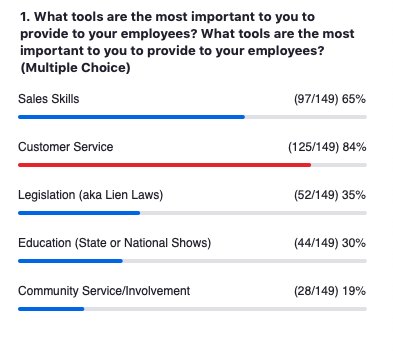Menu
Sign in below to keep watching.
How are different markets performing? What economic trends are on the horizon? How will this affect storage? Join us as we dive deep into national and regional trends, looking at storage prices, occupancies, and construction pipeline to make sense of storage in 2023.
Featured Speakers: John Chang
Moderators: Tommy Nguyen & Melissa Huff
Category: Owning & Investing
Focus: Owners & Operators
Aired: February 23, 2023
Duration: 1:10:05
Overview
If you don't have time to watch the whole session, here are some of our favorite parts:
We asked our experts: What are the most important economic markers an operator should be keeping up with and why?
One of the things I always track is absorption. Absorption is tied to household formation. If you graph the absorption of self storage space next to household formation, you'll see there is a strong correlation. If you take household formation and graph it against consumer sentiment, there is a correlation. So the University of Michigan Consumer Sentiment Index that comes out every month is the one indicator I would be watching right now. It just bottomed out last year, it reflected inflation and people got scared. Household formation dropped like a rock when consumer sentiment dropped. Now we've started to see it bounce back. What customer sentiment does in 2023 will tell us a lot about the demand for self storage." - John Chang
Gabfocus Sessions are virtual workshops for self storage owners, managers, and operators. Brought to you by the team behind Gabfest: StoragePug and Affordable Storage Guys Management.
Each session features hand-picked industry pros who will dive deep into relevant topics surrounding our industry, share best practices, and explore trends in the market. It's our hope that these sessions help you navigate your self storage business better during these uncertain times.
Want to learn more about self storage? Join us on select Thursdays for Gabfocus.


Our panelists will be happy to answer any questions you have. We hope you enjoyed this Gabfest Session. Talk soon!
“Once your operation is in place, you can become more dynamic with your pricing, but that requires data. You need some method of being able to record the data that you need to know whether your price is in the right place - whether you need to move it up or start giving some concessions.” - Warren Lieberman
“I never want to downplay to what someone else is doing. I'm better than they are, then I'm going to be worth a higher price. That's what value is. If you go out to a restaurant and get really good service, would you go back? Yes! What if it was pricier? You'd still go back because you got better service and a better product.” - Jim Mooney
"It's good to be informed on your competition. I don't want to ignore them, but I don't want to respond too strongly to them either." - Warren Lieberman
"We did a survey of 10,000 facilities on their pricing. We found out that two-thirds of those operators didn't change the price of a single unit of the course of a month." - Warren Lieberman
“Rate increases and value pricing are the number one ways to grow your revenue.” - Jim Mooney
"Tenants in more convenient units tend to be less price sensitive." - Warren Lieberman
"The size of the unit is only one aspect of what people are willing to pay for." - Warren Lieberman
Lease up marketing strategies:
Your average customer value
Find the average stay length of all tenants. Next take your economic occupancy and divide by how many units you have. That will tell you what the average customer pays.
Multiply the average length of stay by what the average customer pays, and that's the average value of a customer.
For example, if a customer stays for 12 months and pays $100 per month, then their value is $1,200.
Your average lead value
Figure out your closing rate (or conversion rate) i.e. how many leads do you turn into tenants? Multiply that by your average customer lifetime value to figure out what your leads are worth.
Pro Tip: see which lead sources are converting the best. It may be that certain sources have a higher conversion rate, so those leads are worth more to you than a source that barely converts.
Typical Lease-up timeline
According to our panelists, it's typical to see a 3-4% increase each month, putting your facility at 36% after the first year, and 72% after the second.
Alternately, you can look at your lease up goals through the lens of your units, aiming for 20 units rented per month.
For Nick and StorageMax, they pro forma their economic occupancy at 85% with their sweet spot at 92%.